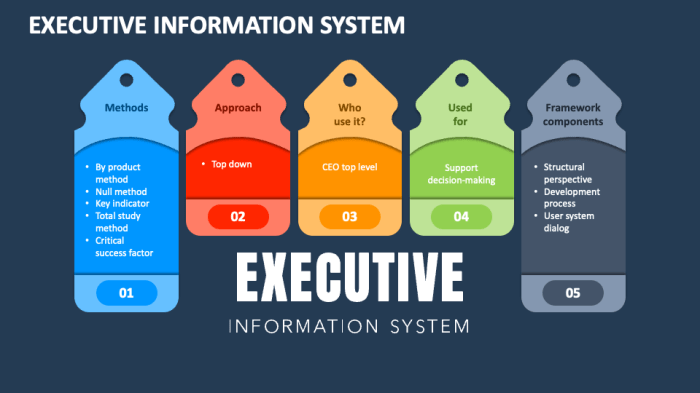Executive cars 2025 introduces an exciting evolution in luxury mobility, showcasing the perfect blend of sophistication, technology, and sustainability. With a keen focus on environmental consciousness and cutting-edge features, these vehicles are set to redefine what it means to travel in style. As we delve into the characteristics and emerging trends in the executive car market, it becomes clear that the future is not only about luxury but also about innovative driving experiences.
The landscape of executive cars is rapidly changing, driven by advancements in technology and shifting consumer preferences. In this exploration, we will highlight the key players in the market, the features that define these vehicles, and the overarching trends that are shaping the industry as we move toward 2025.
Overview of Executive Cars in 2025
In 2025, executive cars are poised to embody a perfect blend of luxury, technology, and sustainability. These vehicles are designed to offer unparalleled comfort and cutting-edge features while aligning with global trends toward eco-friendliness. As the market evolves, understanding the characteristics that define these cars is crucial for both manufacturers and consumers.
The executive car segment is increasingly influenced by several key trends, including the rise of electric vehicles (EVs), advancements in autonomous driving technologies, and a growing emphasis on sustainability. Technological advancements, such as enhanced connectivity features, improved safety systems, and innovative infotainment options, are transforming the executive driving experience.
Characteristics of Executive Cars in 2025
Executive cars in 2025 are defined by their luxurious designs, advanced technological features, and commitment to sustainability. Key characteristics include:
- Luxury Interiors: High-quality materials, customizable seating, and advanced climate control systems create an opulent atmosphere.
- Advanced Technology: Integration of artificial intelligence, smart assistants, and state-of-the-art infotainment systems.
- Eco-Friendly Options: Many executive cars will offer hybrid and fully electric powertrains to meet environmental standards.
Major Players in the Executive Car Market
The executive car market in 2025 features a competitive landscape with several key manufacturers leading the charge. These companies are innovating and adapting to meet changing consumer demands.
Comparison of Top Manufacturers
Leading manufacturers such as Mercedes-Benz, BMW, Audi, and Tesla are at the forefront of the executive car market. Each brand employs unique strategies to capture market share:
- Mercedes-Benz: Focused on luxury and technology integration, enhancing user experience with MBUX infotainment system.
- BMW: Emphasizes performance and driving dynamics while investing in electric vehicle technology.
- Audi: Prioritizes stylish design and advanced safety features, with a strong lineup of electric models.
- Tesla: Disrupts the market with its fully electric vehicles that offer exceptional range and performance.
New Entrants in the Executive Car Segment
Several new players are entering the executive car market, leveraging technological innovations and changing consumer preferences. Startups are focusing on electric and autonomous vehicles, aiming to provide alternatives to traditional luxury brands. These newcomers are often more agile, allowing for rapid innovation and adaptation to market trends.
Features of Executive Cars in 2025
As the demand for executive cars increases, so do the expectations for luxury features and innovations that cater to an elite clientele.
Luxury Features in Executive Cars
The luxury features expected in executive cars of 2025 transcend conventional offerings:
- Personalized Comfort: Features like massage seats, customizable ambient lighting, and advanced sound systems.
- High-Tech Interfaces: Touchscreen displays with intuitive controls, voice recognition, and augmented reality navigation.
- Connectivity: Seamless integration with personal devices and enhanced in-car Wi-Fi capabilities.
Sustainability and Eco-Friendly Technologies, Executive cars 2025
Sustainability will play a pivotal role in the development of executive vehicles in 2025. The industry is moving towards:
- Electric Powertrains: A significant shift towards hybrid and fully electric models that reduce carbon emissions.
- Recyclable Materials: Manufacturers are increasingly using sustainable materials in their vehicle interiors and parts.
- Energy Efficiency: Advanced engineering techniques to improve energy consumption and reduce waste.
Market Trends and Consumer Preferences: Executive Cars 2025
Consumer preferences are evolving in response to technological advancements and societal changes, influencing the executive car landscape.
Changing Consumer Preferences
The preferences of consumers in the executive car market are shifting towards:
- Technology Integration: Buyers prioritize vehicles that offer the latest technology and connectivity options.
- Environmental Consciousness: An increasing number of consumers prefer eco-friendly vehicles.
- Personalization: The demand for customizable features and bespoke options is on the rise.
Impact of Remote Working on Demand
The rise of remote working has had a profound impact on the demand for executive vehicles. With more executives working from home, the need for daily commuting vehicles has diminished, changing the dynamics of car ownership and usage.
Future of Autonomous Driving in Executive Cars
As technology continues to evolve, autonomous driving is set to transform the future of executive cars.
Developments in Autonomous Driving Technologies
In 2025, the developments in autonomous driving technologies for executive vehicles will include:
- Level 4 Autonomy: Vehicles capable of fully autonomous driving in specific conditions.
- Safety Enhancements: Advanced sensor systems and AI-driven features to prevent accidents.
- User Experience: Improved comfort of passengers due to hands-free driving options.
Benefits and Challenges of Self-Driving Executive Cars
Self-driving executive cars promise numerous benefits, including:
- Increased Efficiency: Reduction in travel time and enhanced productivity during commutes.
- Safety Improvements: Decreased accident rates and enhanced road safety.
- Revolutionized Experience: Passengers can focus on work or leisure rather than driving.
However, challenges such as regulatory hurdles and consumer acceptance still remain.
Price Trends and Financing Options
Pricing strategies for executive cars in 2025 are shaped by various factors, including technological advancements and market demand.
Pricing Strategies for Executive Cars
The pricing of executive cars in 2025 is influenced by:
- Technology Costs: Incorporating advanced technology can raise initial prices.
- Sustainability Factors: Eco-friendly materials and electric powertrains may affect pricing.
- Market Competition: Competitive pricing strategies among manufacturers to attract consumers.
Financing Options for Consumers
Consumers have various financing options available when purchasing executive vehicles:
- Leasing: An attractive option for those who prefer to drive the latest models without a long-term commitment.
- Loans: Traditional auto loans with competitive interest rates.
- Subscription Services: Emerging subscription models that offer flexible vehicle access.
Global Market Insights
The global executive car market in 2025 is diverse, with significant growth potential in various regions.
Overview of Global Executive Car Market

The executive car market is expected to see substantial growth, particularly in emerging economies. Key markets include:
- North America: Continues to dominate with a strong demand for luxury vehicles.
- Asia-Pacific: Rapid economic growth and rising disposable income are driving demand.
- Europe: High preference for environmentally-friendly vehicles.
Cultural Factors Influencing Preferences

Cultural factors play a significant role in influencing executive car preferences across different regions. For instance, in Asia, spacious interiors are often prioritized, whereas in Europe, performance and sustainability are key considerations.
Maintenance and Ownership Costs
The cost of owning an executive car is influenced by several factors that potential buyers should consider.
Expected Maintenance Costs
The maintenance costs for executive cars can be substantial but vary by model and manufacturer. Anticipated costs include:
- Regular Service: Routine maintenance and service appointments to keep vehicles in optimal condition.
- Parts Replacement: Costs associated with high-quality parts and specialized repairs.
- Insurance: Higher insurance premiums due to the luxury status of these vehicles.
Factors Influencing Ownership Costs
Several factors can influence the overall ownership costs of executive vehicles in 2025, including:
- Fuel Efficiency: The efficiency of the vehicle significantly impacts fuel costs.
- Depreciation: Luxury cars typically depreciate at a slower rate than standard vehicles, affecting resale value.
- Warranty and Service Packages: Comprehensive packages can reduce unexpected costs.
Last Point

In conclusion, the future of executive cars in 2025 promises to be a captivating blend of luxury, technology, and sustainability. As manufacturers adapt to the changing market demands and innovate with new features, consumers can expect a remarkable array of options that not only cater to their desire for comfort and performance but also embrace eco-friendly practices. The journey into this new era of executive vehicles is poised to reshape our understanding of luxury travel.